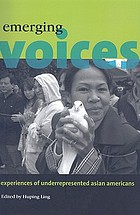
The growth, status, and pedagogical concerns of Asian American studies as an academic discipline have been the focus of some monographs. Sucheng Chan’s In Defense of Asian American Studies: The Politics of Teaching and Program Building provides a series of essays from a theoretical but also practical perspective that describe the author’s efforts over three decades to build, support, and sustain Asian American studies classes and programs at three University of California campuses. The essays were written over the author’s career and provide useful information about early efforts to build support for Asian American studies programs, as well as pedagogical and political issues that arose over the years in advocating for Asian American studies within institutions and across the ethnic studies and humanities disciplines more generally. Kent Ono’s edited Asian American Studies after Critical Mass is intended to lay out new research and theoretical directions for Asian American studies as a discipline. The work consists of ten invited essays focusing on such topics as Asian American film and popular culture, globalization and transnational citizenship, and gay and lesbian Asian Americans. The editor discusses the agenda of the volume in a prefatory article titled “Asian American Studies in Its Second Phase.” Mark Chiang’s The Cultural Capital of Asian American Studies: Autonomy and Representation in the University is a rather dense exploration of the evolution of Asian American studies in universities and the interrelationship between the political function of academic work and its claims to intellectual autonomy. The author also explores how Asian American studies has shifted from a focus on legitimacy based on political mobilization to legitimacy based on academic capital, not unlike other ethnic studies disciplines.
Another area of research has focused on contemporary community life, demographic trends, and issues of concern to different Asian American ethnic group populations. Pyong Gap Min is the editor of the second edition of Asian Americans: Contemporary Trends and Issues. This volume provides readings on important issues impacting Asian Americans with case studies and photo essays related to larger Asian American communities, including Chinese, Japanese, and Filipino Americans. Other chapters focus on South Asian and Southeast Asian Americans, which include a range of ethnic groups. The opening portion of the work includes introductory essays on Asian American history, settlement patterns and demographics, and socioeconomic experiences among the broader Asian American population. A critique of this work would be the somewhat dated material and the primary focus on the most sizable and established Asian American populations. Huping Ling serves as editor of Asian America: Forming New Communities, Expanding Boundaries. This volume presents a range of articles focusing on post-1960s Asian communities in the United States and Canada. Topics range from Chinese Americans in the Chicago area to Vietnamese Americans in Orange County. Of particular focus are global views of Asian American communities, diversity among Asian populations, and territorial and cultural boundaries defining Asian communities in North America. Huping Ling’s Emerging Voices: Experiences of Underrepresented Asian Americans is an edited compilation intended to provide scholarship on issues important to several more recently arrived and/or smaller Asian American ethnic groups who have often gone underrepresented within broader Asian American studies research. Contributed articles focus on the concerns of Burmese, Hmong/Mong, Indonesians, Kashmiri, Laotians, Roma, Thai, and Tibetans. Issues include education, economic incorporation, and cultural adaptation. While not all of the scholarship is particularly strong, the work does provide valuable insights on groups and smaller communities within certain ethnic groups that are in some cases only marginally represented in the broader literature.
 Asian America: forming new communities, expanding boundaries
by
Asian America: forming new communities, expanding boundaries
by
 Emerging voices: experiences of underrepresented Asian Americans
by
Emerging voices: experiences of underrepresented Asian Americans
by